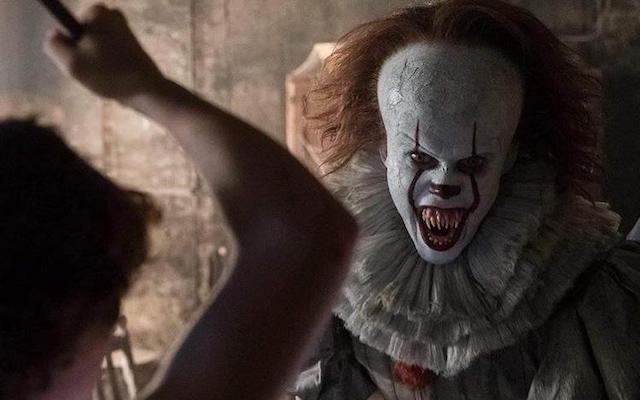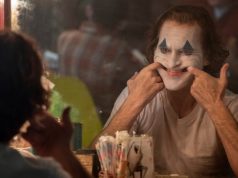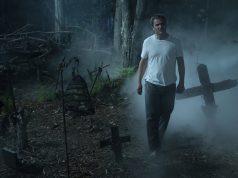
If the first half of the two-movie adaptation of Stephen King’s “It” was more funhouse thrills than outright terror, “It: Chapter Two” leans even harder into that choice, yielding an epic-length but novella-deep exercise in mild, jokey horror. The seven kids terrorized by the sewer clown are 27 years older now, and they return to Derry, Maine, to re-defeat said sewer clown (played with fiendish gusto by Bill Skarsgard). Helpfully, since seven was too many to keep track of, one of the self-described “Losers” is quickly taken out of the picture, but it turns out six is too many, too: Poor Mike (Isaiah Mustafa), the token minority, still gets the short end of the stick in terms of story and character. It befalls Mike, who never left Derry, to summon the others, who have forgotten most of their trauma because they did leave Derry (indeed, it is suggested that the farther away they went, the more they forgot) … but despite not remembering, they all (except one) drop everything and return with great urgency to their hometown, because I guess they remembered enough to know that Mike was trustworthy.
Anyway, Mike has been gathering intel on It all this time, so he knows they can’t re-defeat it unless they first remember what happened last time. Also, they will each need to obtain a personal artifact to use in the It-killing ritual. (I feel like there are a lot of conclusions being jumped to, a lot of assumptions based on facts not in evidence, but that’s true of most horror movies about ancient evils.) Director Andy Muschietti, keen-eyed and good with the camera, spends a great deal of time on these side missions, most of which involve the person having a ghastly Pennywise-induced hallucination and realizing it long after we do. There’s some splendidly nightmarish imagery in those hallucinations, but how scared do you expect us to be when it isn’t real?
There is also the matter of Pennywise, who can change form at will and has various powers over time and space, yet who is also constrained at times by certain physical laws. At one point he can’t reach the Losers because he has made himself huge and they’ve scrambled into a crevice. Can’t he just make himself small again? If there’s any consistency to it, I wasn’t able to discern it; I suspect it’s one of several things that make more sense in the one-million-page book than in Gary Dauberman’s screenplay adaptation of it.
Another one of those things is the presence of Henry Bowers (Teach Grant), the grown-up version of the bully who tormented the kids before, who escapes from the mental hospital and menaces them again. In the first film, these everyday acts of evil (see also: Bev’s abusive father) served as a parallel and a contrast to the supernatural threats. This time, Bowers seems to be here only because the book calls for it. The same goes for the grotesque gay-bashing incident that opens the movie. Yes, Pennywise isn’t the only vicious creature in the world. What about it?
There was a flurry of excitement over who would play the adult versions of the kids, and the casting is strong: James McAvoy as Bill, now a novelist who’s famous for being bad at endings (a loving jab at Mr. King); Jessica Chastain as Beverly, introduced as she’s giving her abusive husband the heave-ho; James Ransone as Eddie, the motormouth; Bill Hader as Richie, now a stand-up comedian; Jay Ryan as fat Ben, who grew up hot. Each has one or two personal issues to deal with (e.g., Bill blames himself for what happened before), with flashbacks to childhood filling in the details, but each is also underwritten. There’s so much of everything else going on that characterization gets lost in It.
C (2 hrs., 49 min.; )





